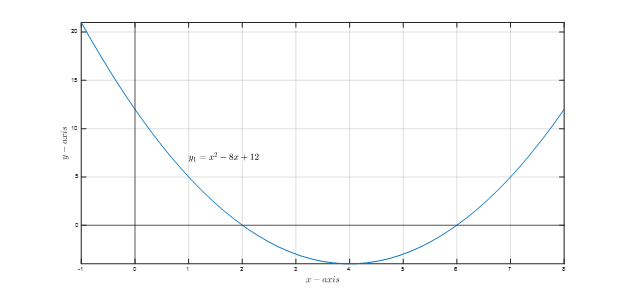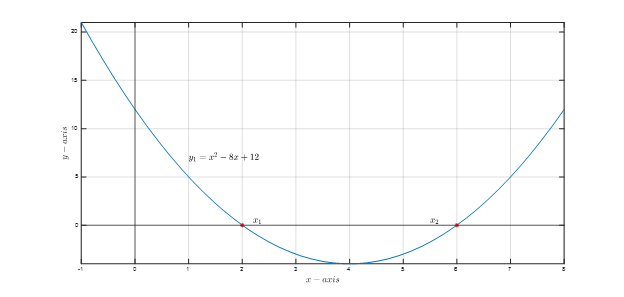Have you ever found yourself staring at a daunting quadratic equation, unsure of where to begin or how to solve it? Quadratic equations can be complex, but with the right tools and understanding, solving them becomes much more manageable. In this article titled “Quadratic Equation Calculator Overview,” you’ll discover an amazing online tool that simplifies solving these equations, and you’ll get an insightful walkthrough on quadratic equations themselves and how to effectively tackle them.
 Quadratic Equation Calculator
Quadratic Equation Calculator
Quadratic Equation Calculator Overview
Quadratic equations represent a fundamental concept in mathematics, appearing in various fields from physics to finance. Solving them can be tricky, especially when done manually. However, the quadratic equation calculator is a fantastic free online tool that provides clarity. This calculator requires you to input the values for a, b, and c from your quadratic equation of the form ax² + bx + c = 0 and delivers a detailed, step-by-step solution. Let’s break down how this tool makes your life easier.
Key Features of the Quadratic Equation Calculator
This calculator is designed to take the stress out of your solving process. With user-friendly input fields for a, b, and c, you’ll find navigating this tool straightforward. It not only computes the answers but also walks you through each step, so you understand the process thoroughly. Additionally, it’s versatile and beneficial for users across different disciplines.
Quadratic Equations Explained
To make the most out of the quadratic equation calculator, it helps to first understand what quadratic equations are. Quadratic equations are second-degree polynomial equations in the form ax² + bx + c = 0, where ‘a’, ‘b’, and ‘c’ are constants with ‘a’ not being zero. Understanding their constituents and characteristics is essential for solving them effectively.
Components of Quadratic Equations
The equation’s key components include:
- a: The coefficient of x², signifying the equation’s level of curvature.
- b: The coefficient of x, affecting the symmetry of the parabola.
- c: The constant term, which offsets the parabola from the origin.
These components interact to define the quadratic curve and the conditions for their solutions. Unlike linear equations, quadratic equations can have one, two, or even no real solutions, depending on the discriminant.
The Discriminant
The discriminant of a quadratic equation, calculated as b² – 4ac, plays a crucial role in determining the type and number of solutions. Here’s how it breaks down:
- If the discriminant is positive, there are two real solutions.
- If it equals zero, there’s precisely one real solution.
- A negative discriminant leads to two complex solutions.

This image is property of www.calculator.io.
Solving Quadratic Equations
With the theory in your back pocket, let’s explore how to solve these equations using the quadratic formula:
$$x = \frac{-b ± \sqrt}$$
This formula is a universal solution that addresses all forms of quadratic equations, regardless of their discriminant.
Types of Solutions Based on the Discriminant
Understanding solutions based on the discriminant enables you to predict the nature of your equation’s solutions:
- Two Real Solutions: Occur when the discriminant is positive, resulting in two intersection points with the x-axis.
- One Real Solution: Happens when the discriminant is zero, indicating the vertex of the parabola touches the x-axis.
- Two Complex Solutions: Arise when the discriminant is negative, showing that the parabola doesn’t intersect the x-axis.
Example Usage
To make these explanations more tangible, let’s go through some examples:
Example 1: Two Real Solutions
Consider the equation x² – 8x + 12 = 0. Plugging into the formula, you’ll find:
- Discriminant: (b² – 4ac = 64 – 48 = 16)
- Real Solutions: (x₁ = 2, x₂ = 6)
Example 2: One Real Solution
For the equation -x² + 10x – 25 = 0, solve as follows:
- Discriminant: (b² – 4ac = 100 – 100 = 0)
- One Real Solution: (x = 5)
Example 3: Two Complex Solutions
With x² – 4x + 8 = 0, it breaks down to:
- Discriminant: (b² – 4ac = 16 – 32 = -16)
- Complex Solutions: (x₁ = 2 + 2i, x₂ = 2 – 2i)

This image is property of www.calculator.io.
Usage Tips
To enhance your experience with the quadratic equation calculator, consider these practical tips:
- Standard Form: Always ensure your equation is rearranged into the standard form of ax² + bx + c = 0 before inputting values.
- Complex Numbers: Familiarity with complex numbers enriches your capacity to understand solutions, especially when the discriminant is negative.
- Visualization: Utilizing graphical tools can help illustrate solutions, showing visually how the parabola interacts with the x-axis.
Applications
Quadratic equations aren’t limited to the classroom. They have vast applications in various fields:
- Engineering: For calculating stresses and material properties.
- Economics: In modeling cost functions or revenue calculations.
- Agriculture: Analyzing growth patterns or optimizing yields.
In all these cases, accurately solving quadratic equations can be crucial for making data-informed decisions.

This image is property of www.calculator.io.
Related Tools
Depending on your needs, you might benefit from these additional tools:
- Quadratic Formula Calculator: Focuses solely on applying the quadratic formula for quick solutions.
- Math Equation Solver: Offers broader capabilities for solving various types of equations.
Throughout this article, the aim has been to equip you with the knowledge and tools to handle quadratic equations confidently. The quadratic equation calculator serves as an indispensable ally in this journey, making complex calculations more accessible and understandable. Whether you are a student grappling with algebra or a professional applying these principles in your work, this tool helps make the process straightforward and enlightening. By leveraging such technology, quadratic equations need not be a cause for confusion.